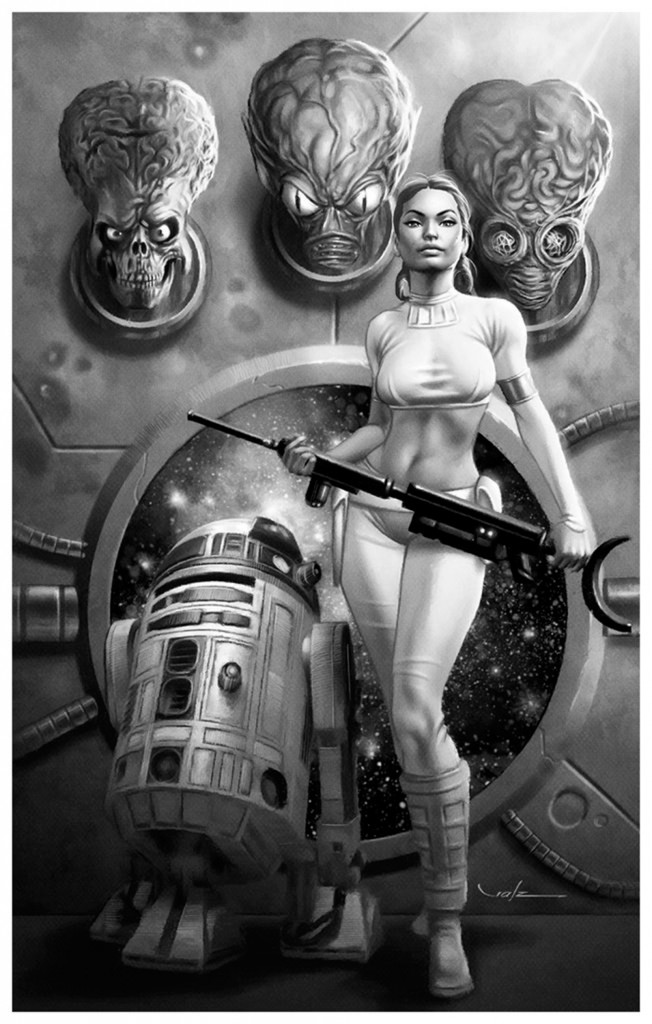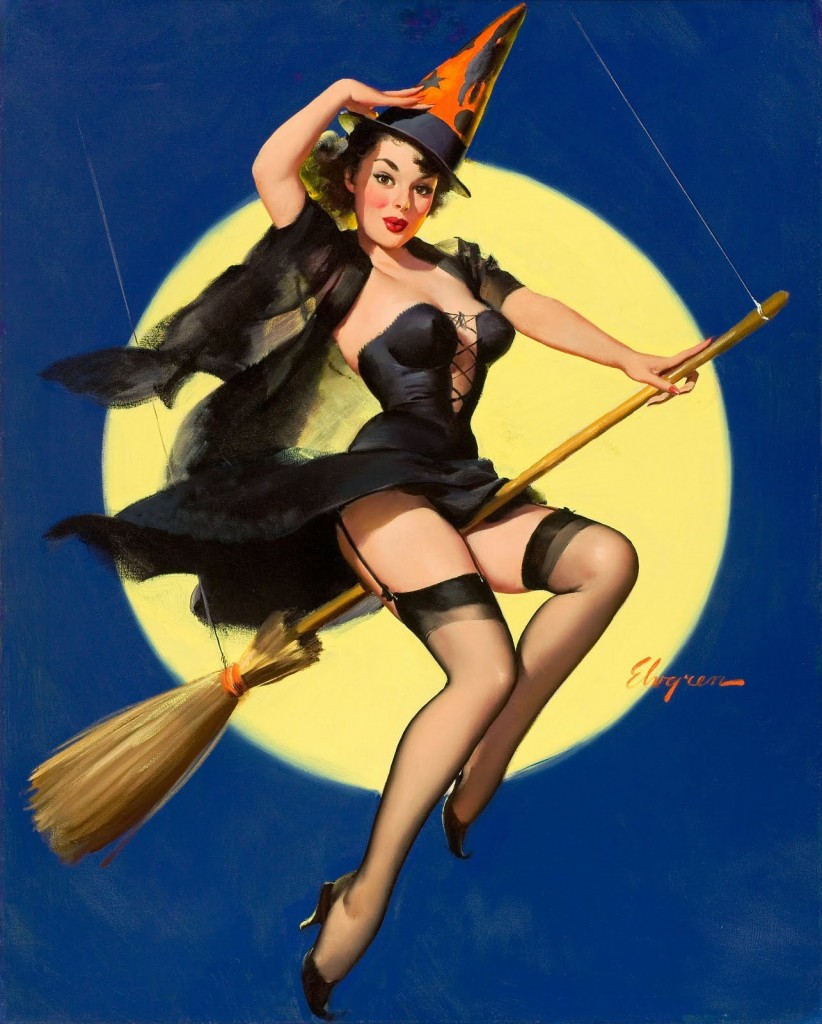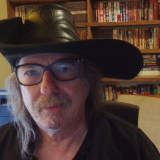Tomorrow is Halloween.
For some people Halloween is more exciting than Christmas. They wait for it the whole year ’round and gleefully begin putting up decorations and planning costumes the moment it is socially acceptable to do so (or… you know… all the time — what does socially acceptable have to do with Halloween anyway?)
So, in anticipation of Halloween I want to talk about two things. Witches and Carlos Valenzuela.
Let’s start with Carlos
Carlos Valenzuela is a freelance illustrator and comicbook cover artist from Chile. He’s worked for Fantasy Flight Games, SQP Publishing and the Comic Buyer’s Guide, among others. He has done comic books and comic book covers and other illustrations for hire. But he also does some personal work that he highlights on his own gallery which is what I want to focus on.
Carlos obviously has a deep love for the old B-Movie monsters as well as pin-ups. His work juxtaposes monsters like the Creature From the Black Lagoon, Vampires, Werewolves, Zombies, etc, with pin-up beauties like Marilyn Monroe. The results are kitschy but fun portraits painted in grayscale, like an old black-and-white movie.
The pictures have a fun, nostalgic sort of feel to them and are clearly meant to be fun. Have a look:
You can see more of Carlos Valenzuela’s work at his Deviantart gallery here or at his artworkfolio site here.
Okay, let’s talk about witches. Now, in order to do this I’m going to be showing you some art which contains depictions of the nude human form, okay? Let’s be clear: I’m going to post pictures of naked women. Because, witches were all women and, if you know anything about witches you know that they like nothing better than to take off their clothes and ride around on their broomsticks. But it’s okay because these pictures were painted by artists from Europe a long time ago so… you know… art. Right?
So, if the sight of naked people is a trigger for you then this is your warning. Naked people ahead.
Witches are a favorite subject of artists of all stripes, but particularly in the Victorian era for some reason. Just as fairy paintings had their place, so paintings of witches filled a particular niche. One of the most famous witch paintings is by John William Waterhouse. The Magic Circle was painted in 1886 and depicts a witch or sorceress drawing a fiery magic circle on the ground.
In a style typical of Waterhouse, the main character is a lone, female figure, placed centrally on the canvas. The surrounding landscape is hazy, as though it is not quite real, and the background figures are only discernible on close inspection, deliberately ensuring the witch is the only image of importance.
Another Waterhouse witch is Circe. In his painting Circe Offering the Cup to Ulysses, Waterhous depicts the sorceress Circe offering Odysseus a cup containing a potion with which she seeks to bring him under her spell as she has his crew. Here Circe is depictes as being nude but Waterhouse covers her with a diaphanous gown.

Luis Ricardo Falero’s witches are a good deal less modest. Falero was a Spanish painter who specialized in female nudes and mythological, oriental and fantasy settings. His 1878 painting Witches going to Their Sabbath is a tour-de-force. The painting is filled with figures and each has their own trajectory, their own energy and personality. The witches are flying through the air but are depictes as being intertwined or crawling over each other.
It’s like a horror movie imagined by Benny Hill.
Another Falero witch is featured in his 1880 painting The Witches Sabbath or Muse of the Night. This one depicts a single witch riding her broom stick through the night. This is obviously the one witch that was late for the Sabbath party.
Here’s another lone witch, this one painted by French artists Albert-Joseph Pénot. This one was painted specifically for one of those infamously famous French postcards. Curiously, the fall of the model’s hair suggests she is travelling rump-first (but with the broom travelling in the right direction; that is, from right-to-left); her pose suggests she is travelling face-first (but with the broom travelling in the wrong direction; that is, from left-to-right): all very confusing. The solution to this may be that Pénot is indebted to a sixteenth-century tradition among German artists of depicting witches with their hair flying in the opposite direction to the way they are travelling, perhaps it was to show how un-natural, inverted, or contrary to nature, the witch was in the minds of German artists.
As the twentieth century rolled on witches became less exhibitionist. They still do manage to titillate, though with commercial pin-up artists such as Gil Elvgen with his painting Riding High from 1959 or LoopyDave’s Magical Brew from 2010 who is modestly dressed and has traded in her broomstick for a cup of java.
So, what have we learned? Witches were the original pin-up girls? B-Movies are always black and white? European painters could be lecherous perverts with impunity because… you know… art?
Or maybe we’ve just had a little bit of fun. I hope you’ve had fun with this post and I hope you all have a fun halloween tomorrow.
Just remember to look both ways before you cross the street and don’t eat all your candy all on one night. Stay safe.
























